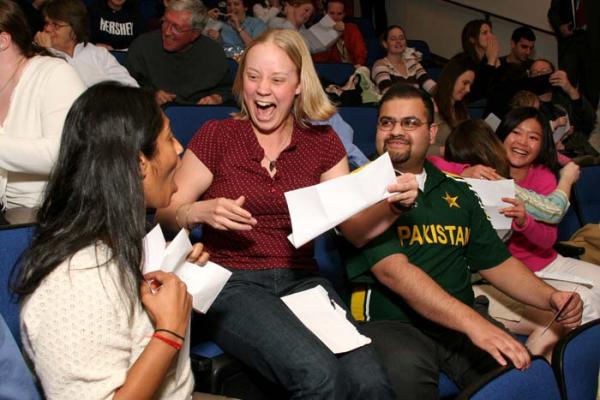Match Week is upon us! On Friday, soon-to-be-doctors throughout the country will learn their fate in terms of residency placement and career. This “Match Day” is a rite of passage, the culmination of work that began years before even their days as pre-med undergraduates. Did they match at all and, if so, then was it in their desired field? Will they have to scramble to find an unfilled spot in a discipline they never imagined? If with a family, then will the name in the envelope warrant their uprooting or being separated from loved ones for potentially up to seven years?
To say students throughout the nation’s medical school system are on edge would be an understatement. Let’s break down why and elucidate the good from the bad of this tradition.
Understanding the “match”
From the National Residency Matching Program
“The National Resident Matching Program® (NRMP®) is a private, non-profit organization established in 1952 at the request of medical students to provide an orderly and fair mechanism for matching the preferences of applicants for U.S. residency positions with the preferences of residency program directors. In addition to the annual Main Residency Match® for more than 43,000 registrants, the NRMP conducts Fellowship Matches for more than 60 subspecialties through its Specialties Matching Service® (SMS®).
The Match Process For applicants, the Main Residency Match process begins in the fall during the final year of medical school, when they apply to the residency programs of their choice. Throughout the fall and early winter, applicants interview with programs. From mid-January to late February, applicants and program directors rank each other in order of preference and submit the preference lists to NRMP, which processes them using a computerized mathematical algorithm to match applicants with programs. Research on the NRMP algorithm was a basis for awarding The Sveriges Riksbank Prize in Economic Sciences in Memory of Alfred Nobel in 2012.”
On March 15, “medical school students and graduates from the United States and around the world will learn in which U.S. residency program they will train for the next three to seven years.” In simultaneous ceremonies (now often live video streamed online), mainly doctors-to-be will open an envelope that reveals a solitary institution name and location. These contents reflect a binding contract.
The Good
There is much good about this process. Everyone before you has endured it, so it is a bonding initiation into the profession. Additionally, it is shared by classmates you experienced the boot camp of medical school with further cementing these relationships - ones that will transform into professional colleagues in the future. Traditions are meaningful and have value. For years, many cherish the memory.
You know what you are getting into from the start of medical school. Though the path is rigorous and by no means easy, the milestones within it are distinctly defined. You know exactly when hurdles need to be met. This certainty, these deadlines help chart a course toward achieving your dream of becoming a urologist or orthopedic surgeon. While matching in itself, especially in an extremely competitive field, is a worthy and honorable goal. It is the pinnacle of years and years of dedication, hard work and much sacrifice.
The Bad
Like anything, there are always those who will find the experience the exact opposite. It could represent the day that a life’s dream proved elusive. This can be utterly devastating. The years and years of commitment, expense, heart and sustained drive and sacrifice could yield a major pivot in a person’s life - forever altering how they envisioned their life’s work and identity. Thankfully, for many, over time they look at this defining moment as an ultimate gift that spared them or propelled them into a better, unimaginable future. But, to come to that mindset on Match Day or the surrounding weeks is not the most common occurrence.
Due to the length of residencies, the match system creates a unique employment track. This can do participants a life disservice given they don’t necessarily learn how to look for a job outside of a designed, strict program. And, for those who do a fellowship or more after residency, they may not look for a job on their own until their late thirties while their peers in other industries have jumped from one to the next and do so readily.
In the end
Overall, it is a week of intense emotions worthy of the gravity of the vocation and the honor, privilege and immense responsibility that comes with caring for patients. The nostalgia of this time infuses a much needed optimism with respect to the future of healthcare. Best of luck to this year’s graduates!




